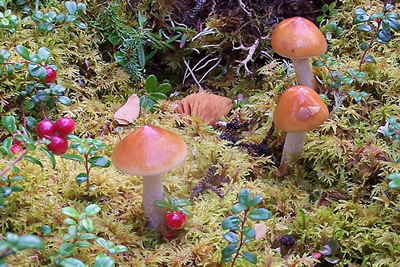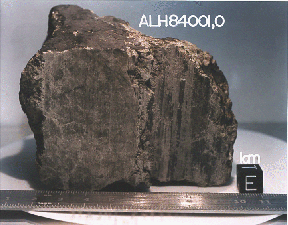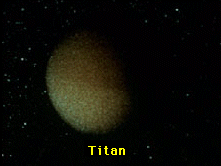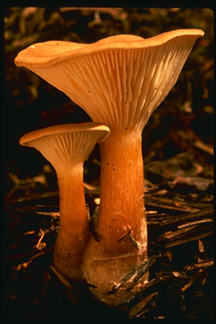Lactarius deliciosus
Click on image for full size
Corel Photography
Kingdom Fungi
Although many fungi may look like
plants, they
are more closely related
to
animals. Fungi are not able to make their
own food like plants can,
so they must get their nourishment from other sources. Many fungi get their nutrients directly from the soil.
Others feed on dead plants and animals. Some fungi even feed on living organisms. Athlete's foot is a common fungus which feeds on a living thing - it eats bits of skin from your toes!
The mushrooms we can buy at the supermarket are an example of a fungus that you can eat. However, those mushrooms are just a tiny bit of the whole fungus. The rest of the fungus (and the biggest part) lives below the ground where we cannot see it.
Fungi come in a wide variety of sizes and forms and many have very important uses to humans. Yeasts are very tiny fungi that we use to bake bread. And did you know that many medicines are produced with the help of fungi? If you've ever taken Penicillin
to help you get over an infection, you can thank a fungus! The green mold that grows on bread that's been left out too long is a close relative of that very important medicine.
You might also be interested in:

Kingdom Plantae has almost 300,000 different kinds of plants. Plants are found all over planet Earth. They can live in fields, in swamps, in oceans and in the desert. They can live where it is hot and
...more
A group of scientists recently conducted a study in a forest near Fairbanks, Alaska to learn more about forests and climate change and global warming. Plants, animals, and fungi are all part of the carbon
...more
Jupiter's atmospheric environment is one of powerful winds, going 250 miles per hour, and temperatures from -270 degrees to +32 degrees (freezing temperature). These winds make it hard for life forms to
...more
In July, 1996 a team of scientists said that they had discovered possible fossils of bacteria in a meteorite named ALH84001 that came from Mars. It was found in Antarctica in 1984 after having landed there
...more
Saturn's atmospheric environment is one of powerful winds, going 250 miles per hour, and temperatures from -270 degrees to +80 degrees. With winds like these, it is hard to have peace and quiet. The region
...more
The air of Titan is a lot like the Earth's, except that it is very cold, from -330 degrees to -290 degrees! Like the Earth, there is a lot of Nitrogen and other complex molecules. There also may be an
...more
Organisms that are able to "make their own food" are called autotrophs, meaning "self-feeders". Some examples of autotrophs are plants and algae (shown in the picture). Both plants and algae use photosynthesis
...more















